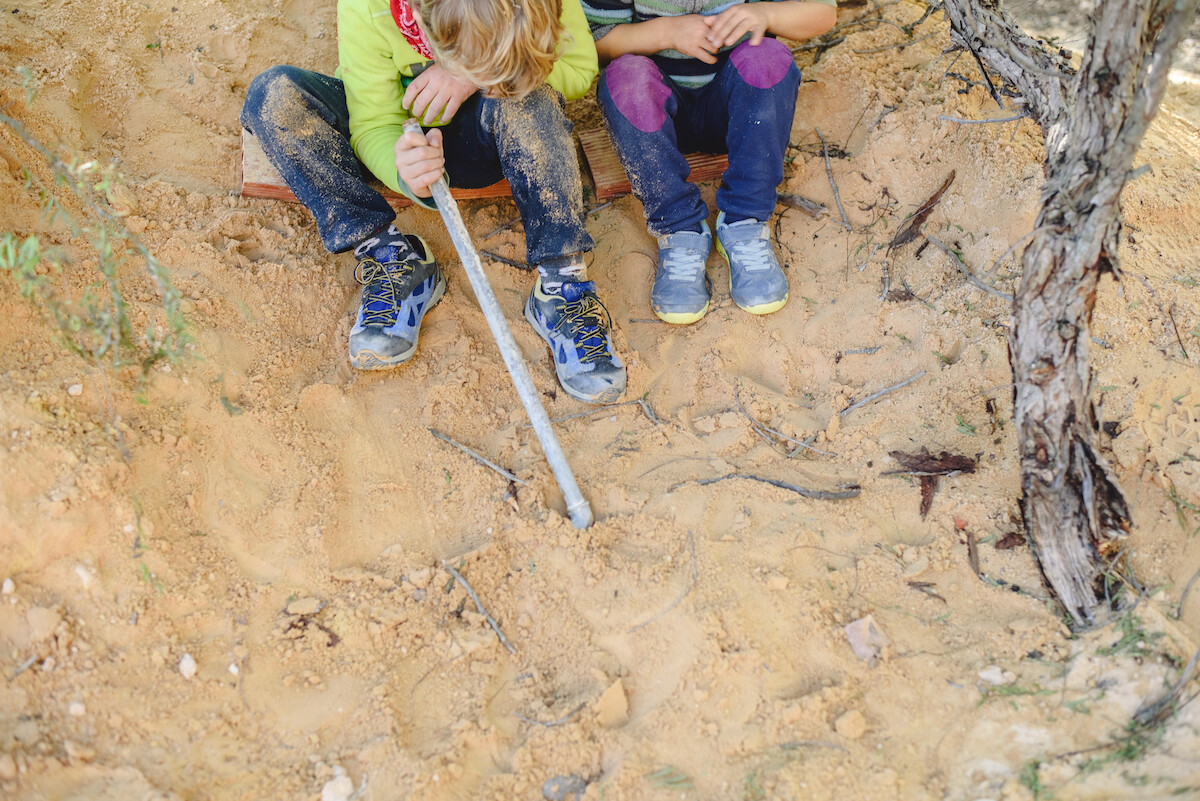Why we need to encourage outdoor play for children
As Australian kids are settling back into their school routine after the summer holidays, the mums in my practice are once again starting to complain about the busyness of life with kids. Afternoon activities like dancing, swimming, karate and tutoring are back on, and that sense of space, time, fun and connection that the holidays inspired in us all is now a long distant memory.
In my book for parents ‘Switched-on Kids, the natural way to raise healthy children’ I write about the importance of unstructured outdoor play for children, to foster a sense of connection to who we really are, to provide the opportunity to explore and being creative as well as facilitating that feeling of ‘There’s no place I need to be, nothing I need to do’.
Outdoor play for children has sadly decreased considerably over the past 20 years, despite being so essential for children’s health and wellbeing. The average child now spends less than thirty minutes a day enjoying unstructured outdoor play (1). This trend is at least partly to blame for the huge increase in overweight and obese children, along with the associated health risks, we are experiencing in the Western world (2).
Outdoor play for children improves their levels of vitamin D, which will increase the bone density and decrease the risk of future heart disease and diabetes (3). Playing out of doors helps exercise the eyes by making them to change focus frequently and this appears to decrease the occurrence near-sightedness (4). Children diagnosed with ADHD experience improvement in their behaviour from being in nature (5) and it also helps sleep (6).
Research has shown that outdoor play for children taking place in natural surroundings, such as parks, gardens and school recreational areas, which has dirt, rocks, trees, shrubs and water such as creeks, lakes and oceans, improves their strength, flexibility and coordination and reduces their stress levels and inattention. It also fosters supportive peer relationships and feelings of competence (7).
According to Karen Malone from University of Wollongong (8) who wrote ‘Every Experience Matters’: An evidence-based review on the role of Learning Outside the Classroom for children’s whole development from birth to eighteen years:
- Outdoor play for children helps them achieve higher results in the knowledge and skill acquisition;
- Increase their physical health and motor skills;
- Socialise and interact in new and different ways with their peers and adults;
- Show improved attention, enhanced self-concept, self-esteem and mental health;
- Change their environmental behaviours for the positive, as do their values and attitudes and their resilience to be able to respond to changing conditions in their environment
What we as chiropractors can do to foster outdoor play for children
With this in mind, I frequently have conversations with parents about what after-school activities are essential for a child. Of course, they need to exercise, but no-one ever stipulated that exercise had to be organised by coaches in 60 minute time slots. Riding bikes around the oval, climbing trees and doing scary stunts at the skate park all counts as exercise, plus it is self-directed, outdoors and fun.
The safe green spaces and quiet streets that we may have enjoyed when we were kids may not be available for our children, but taking a bunch of neighbourhood kids to the park for them to play while we parents chat, read a book or get our exercise by walking the perimeter is much better for all than being locked inside with a device in our hands.
As chiropractors we can do a lot to inspire parents to actively slow down the manic speed of everyday life by encouraging them not to get caught up in the ‘must do activities’ and the perceived expectations of a successful childhood. The benefits of saying ‘No’ can be liberating and exhilarating for the whole family.
References:
(1) Li Ming Wen et al, ‘Time spent playing outdoors after school and its relationship with independent mobility: a cross-sectional survey of children aged 10–12 years in Sydney, Australia’ International Journal of Behavioral Nutrition and Physical Activity 2009, 6
(2) Trost S et al. ‘Physical activity and determinants of physical activity in obese and non-obese children’. Int J Obes 2001
(3) American Academy of Pediatrics. ‘Many Children have suboptimal Vitamin D Levels’ Pediatrics. October 26, 2009
(4) Kathryn A. Rose, Ian G. Morgan et al. Myopia, Lifestyle, and Schooling in Students of Chinese Ethnicity in Singapore and Sydney. Arch Ophthalmol. 2008;126
(5) Wells, N.M. ‘At Home with Nature: Effects of “greenness” on children’s cognitive functioning.’ Environment and Behavior November 2000 vol. 32.
(6) National Wildlife Federation
(7) Louise Chawla, Kelly Keena et al. ’Green schoolyards as havens from stress and resources for resilience in childhood and adolescence.’ Health & Place, Volume 28, July 2014,
(8) Dr Karen Martin. ‘Putting Nature back into Nurture: The Benefits of Nature for Children. A Literature Review’ The University of Western Australia



